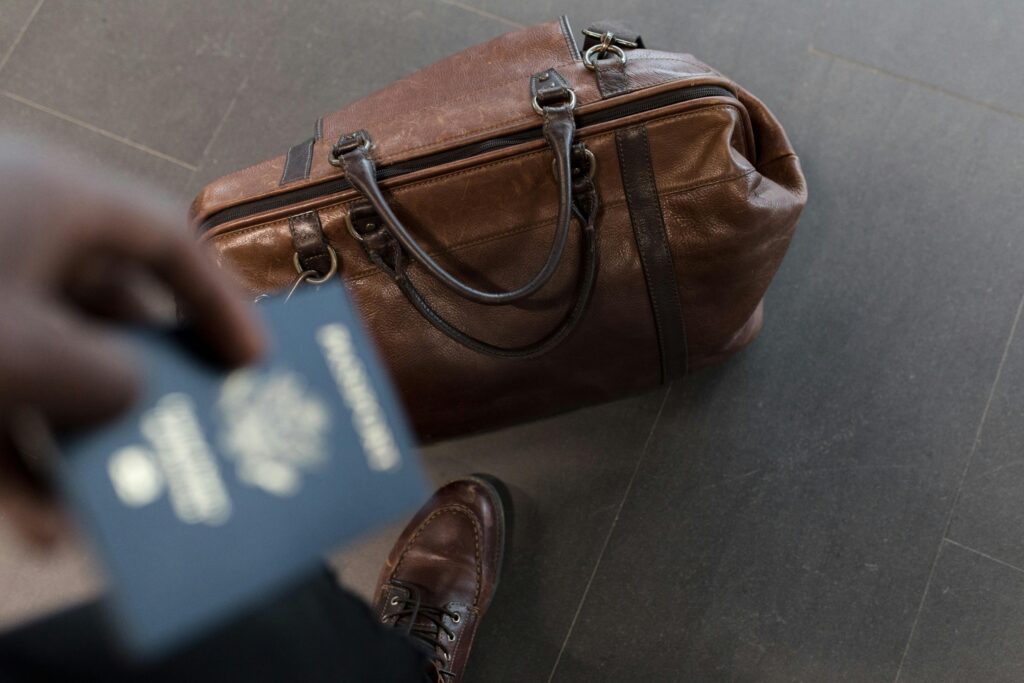Cómo los Emprendedores pueden Beneficiarse de la Visa EB5 en 2024
En un mundo globalizado, los emprendedores buscan constantemente nuevas oportunidades para expandir sus negocios y asegurar un futuro próspero para sus familias. Una de las vías más atractivas para lograrlo es a través de la visa EB5, que ofrece la posibilidad de obtener la residencia permanente en Estados Unidos mediante una inversión significativa en la economía del país.
Para muchos empresarios, como Marco Rodríguez, un emprendedor colombiano con una start-up tecnológica, la visa EB5 representa una puerta abierta hacia el crecimiento y la estabilidad. Esta visa no solo permite la expansión de negocios en uno de los mercados más grandes del mundo, sino que también ofrece beneficios tangibles como la creación de empleos y la posibilidad de establecer una vida estable en EE.UU.
En este artículo, exploraremos en detalle cómo los emprendedores pueden beneficiarse de la visa EB5 en 2024. Analizaremos los requisitos necesarios, los beneficios que ofrece y cómo puede impactar positivamente tanto en sus negocios como en sus vidas personales.
Acompáñanos en este recorrido para descubrir cómo la visa EB5 puede ser la clave para tu éxito empresarial y personal en Estados Unidos. Si deseas más información sobre otros tipos de visas y procesos migratorios, te invitamos a explorar nuestro sitio web.
¿Qué es la Visa EB5 y Cómo Funciona?
La visa EB5 es una visa de inmigrante basada en inversiones que permite a los emprendedores obtener la residencia permanente en Estados Unidos a través de una inversión significativa en una nueva empresa comercial. Este programa fue creado por el Congreso de Estados Unidos en 1990 con el objetivo de estimular la economía estadounidense mediante la creación de empleos y la inversión de capital por parte de inversionistas extranjeros.
Para los emprendedores interesados en expandir sus negocios en EE.UU., la visa EB5 ofrece una oportunidad única de establecerse en uno de los mercados más grandes del mundo y asegurar un futuro estable para sus familias.
Requisitos de Inversión
Para calificar para la visa EB5, los inversionistas deben cumplir con ciertos requisitos de inversión. Según el USCIS, estos requisitos son:
- Invertir al menos $1,050,000 en una nueva empresa comercial en áreas de empleo no objetivo.
- Invertir al menos $800,000 en áreas de empleo específicas (TEA) que tienen altas tasas de desempleo o son rurales.
Es importante destacar que los fondos deben provenir de una fuente legal y ser propiedad del inversionista.
Creación de Empleos
Además de los requisitos de inversión, la visa EB5 exige la creación de empleos. Los inversionistas deben demostrar que su inversión generará al menos 10 empleos a tiempo completo para trabajadores estadounidenses cualificados. Estos empleos pueden ser directos o indirectos, dependiendo de si la inversión se realiza a través de un centro regional o no.
- Empleos Directos: Son aquellos que muestran una relación empleador-empleado directa con la nueva empresa comercial.
- Empleos Indirectos: Son aquellos creados como resultado de la nueva empresa comercial, pero no son empleados directamente por ella.
Empresas que Califican
Para calificar para la visa EB5, la inversión debe realizarse en una nueva empresa comercial. Según el USCIS, una nueva empresa comercial puede incluir:
- Propietario único
- Asociación (limitada o general)
- Corporación
- Fideicomiso comercial
- Alianza comercial (joint venture)
La empresa debe estar orientada a la realización continua de negocios lícitos y con fines de lucro. No se consideran actividades no comerciales, como ser propietario y operar una residencia personal.
Para más detalles y asistencia personalizada sobre cómo los emprendedores pueden beneficiarse de la visa EB5, te invitamos a explorar nuestro sitio web y contactar a nuestros expertos en inmigración.
Cómo la Visa EB5 Puede Impulsar tu Negocio
La visa EB5 no solo proporciona residencia permanente, sino que también ofrece oportunidades significativas para el crecimiento y la expansión de negocios. Esta sección discutirá cómo los emprendedores pueden aprovechar estas oportunidades.
Para muchos emprendedores, la visa EB5 representa una oportunidad única para establecer y hacer crecer sus negocios en Estados Unidos. Esta visa no solo facilita la residencia permanente, sino que también abre puertas a un mercado vasto y dinámico.
Acceso a un Mercado más Amplio
Uno de los principales beneficios de la visa EB5 es el acceso al mercado estadounidense, uno de los más grandes y competitivos del mundo. Este acceso permite a los emprendedores expandir sus operaciones y alcanzar a una base de clientes mucho más amplia.
Por ejemplo, una start-up tecnológica que inicialmente opera en América Latina puede aprovechar la visa EB5 para establecer una sede en Silicon Valley, lo que le permite acceder a recursos, talento y oportunidades de inversión que no están disponibles en su país de origen.
Facilidades para la Creación de Empleos
La visa EB5 requiere que los inversionistas creen al menos 10 empleos a tiempo completo para trabajadores estadounidenses cualificados. Este requisito no solo beneficia a la economía local, sino que también permite a los emprendedores construir un equipo sólido y diversificado.
Un caso de éxito es el de una empresa de manufactura que, gracias a la visa EB5, pudo establecer una planta en una zona rural de Estados Unidos, creando empleo y revitalizando la economía local. Esta expansión no solo mejoró la producción, sino que también fortaleció la posición de la empresa en el mercado.
Acceso a Recursos y Financiamiento
Establecer un negocio en Estados Unidos a través de la visa EB5 también facilita el acceso a recursos y financiamiento. Los emprendedores pueden aprovechar diversas fuentes de capital, desde inversores ángeles hasta fondos de capital de riesgo.
Por ejemplo, una empresa de biotecnología que obtuvo la visa EB5 pudo acceder a financiamiento significativo de inversores estadounidenses, lo que permitió acelerar sus proyectos de investigación y desarrollo. Este acceso a capital fue crucial para el crecimiento y la innovación de la empresa.
Si deseas más información sobre cómo la visa EB5 puede beneficiar a tu negocio, te invitamos a explorar nuestro sitio web y contactar a nuestros expertos en inmigración.
Consejos para Maximizar los Beneficios de la Visa EB5
Para aprovechar al máximo la visa EB5, los emprendedores deben seguir ciertos consejos y mejores prácticas. A continuación, te proporcionamos recomendaciones prácticas para maximizar los beneficios de esta visa.
Planificación Financiera Estrategia
Antes de iniciar el proceso de solicitud de la visa EB5, es crucial realizar una planificación financiera detallada. Asegúrate de tener una comprensión clara de los requisitos de inversión y de cómo vas a financiar tu inversión. Considera trabajar con un asesor financiero especializado en inversiones internacionales.
- Evalúa tus recursos financieros y determina si necesitas financiamiento adicional.
- Investiga las diferentes opciones de inversión disponibles y elige la que mejor se adapte a tus objetivos.
- Prepara toda la documentación financiera necesaria para demostrar la legalidad de tus fondos.
Selecciona el Proyecto de Inversión Adecuado
La elección del proyecto de inversión es uno de los aspectos más críticos para el éxito de tu solicitud de visa EB5. Opta por proyectos que no solo cumplan con los requisitos de inversión, sino que también tengan un alto potencial de éxito y estabilidad.
- Investiga a fondo los proyectos disponibles y elige aquellos que tengan un historial comprobado de éxito.
- Considera invertir en centros regionales aprobados por el USCIS, ya que pueden ofrecer ventajas adicionales como la creación de empleos indirectos.
- Consulta con expertos en inmigración y finanzas para tomar una decisión informada.
Asesoramiento Legal Especializado
Contar con el apoyo de un abogado especializado en inmigración es fundamental para navegar el complejo proceso de solicitud de la visa EB5. Un buen abogado te ayudará a preparar y presentar tu solicitud de manera efectiva, asegurando que cumpla con todos los requisitos legales.
- Elige un abogado con experiencia comprobada en casos de visa EB5.
- Trabaja estrechamente con tu abogado para reunir toda la documentación necesaria y presentar una solicitud sólida.
- Mantente informado sobre cualquier cambio en las regulaciones de la visa EB5 que pueda afectar tu solicitud.
Testimonios de Emprendedores Exitosos
Aprender de las experiencias de otros emprendedores que han obtenido la visa EB5 puede proporcionarte valiosas lecciones y consejos. Aquí te compartimos algunos testimonios:
“Obtener la visa EB5 fue un cambio de vida para mi familia y mi negocio. La clave fue elegir un proyecto de inversión sólido y contar con el apoyo de un excelente equipo legal.” – Juan Pérez, fundador de una start-up tecnológica
“La planificación financiera y la asesoría legal fueron esenciales para el éxito de mi solicitud de visa EB5. No podría haberlo logrado sin la ayuda de expertos en el campo.” – María González, empresaria en el sector de la manufactura
Lista de Verificación de Mejores Prácticas
Para asegurarte de que estás en el camino correcto, utiliza esta lista de verificación de mejores prácticas durante tu proceso de solicitud de visa EB5:
- Realiza una planificación financiera detallada.
- Selecciona un proyecto de inversión con alto potencial de éxito.
- Consulta con un abogado especializado en inmigración.
- Prepara toda la documentación financiera y legal necesaria.
- Mantente informado sobre las regulaciones de la visa EB5.
- Aprende de los testimonios de otros emprendedores exitosos.
Siguiendo estos consejos y mejores prácticas, podrás maximizar los beneficios de la visa EB5 y asegurar un futuro próspero para tu negocio y tu familia en Estados Unidos.
Aprovecha la Visa EB5 para Impulsar tu Negocio en 2024
La visa EB5 se presenta como una oportunidad invaluable para los emprendedores que buscan expandir sus negocios y asegurar un futuro próspero en Estados Unidos. A lo largo de este artículo, hemos explorado los requisitos, beneficios y estrategias clave para maximizar el potencial de esta visa. Al comprender y cumplir con los requisitos de inversión y creación de empleos, puedes abrir las puertas a un mercado amplio y dinámico.
Es fundamental realizar una planificación financiera estratégica y seleccionar proyectos de inversión con alto potencial de éxito. Contar con el apoyo de un abogado especializado en inmigración también es crucial para navegar el complejo proceso de solicitud de la visa EB5. Aprender de los testimonios de otros emprendedores exitosos puede proporcionarte valiosas lecciones y consejos para asegurar tu éxito.
Para ayudarte en este camino, hemos preparado una lista de verificación con los pasos clave:
- Realiza una planificación financiera detallada.
- Selecciona un proyecto de inversión con alto potencial de éxito.
- Consulta con un abogado especializado en inmigración.
- Prepara toda la documentación financiera y legal necesaria.
- Mantente informado sobre las regulaciones de la visa EB5.
- Aprende de los testimonios de otros emprendedores exitosos.
Siguiendo estos consejos y mejores prácticas, estarás mejor preparado para aprovechar al máximo los beneficios de la visa EB5 y asegurar un futuro próspero para tu negocio y tu familia en Estados Unidos.
Si deseas más información o necesitas asistencia personalizada, te invitamos a contactar a Cortes Immigration Law Firm para una consulta gratuita. Nuestro equipo de expertos está aquí para ayudarte a alcanzar tus metas y hacer realidad tu sueño americano.
Cómo los Emprendedores pueden Beneficiarse de la Visa EB5 en 2024 Read More »











